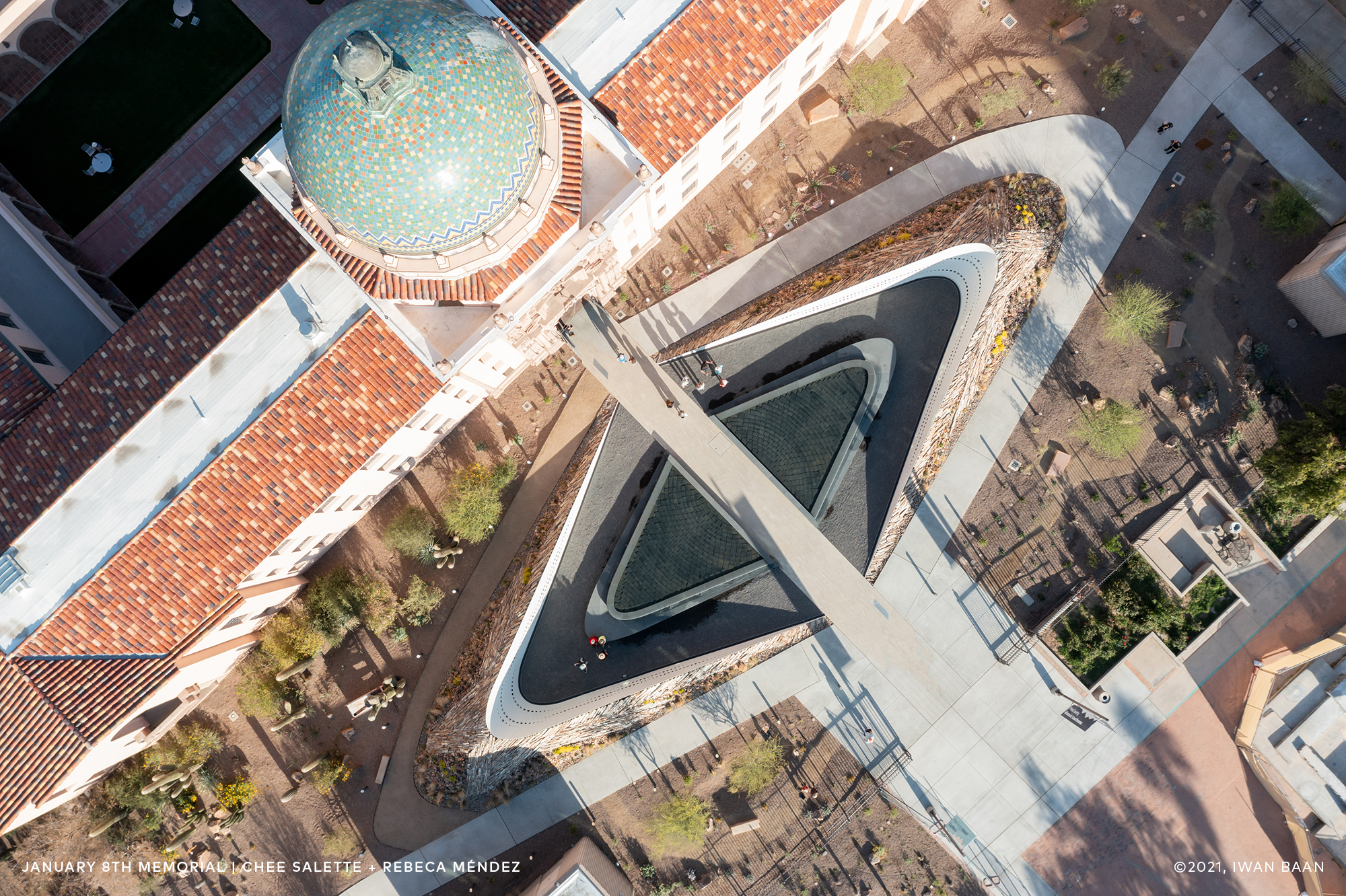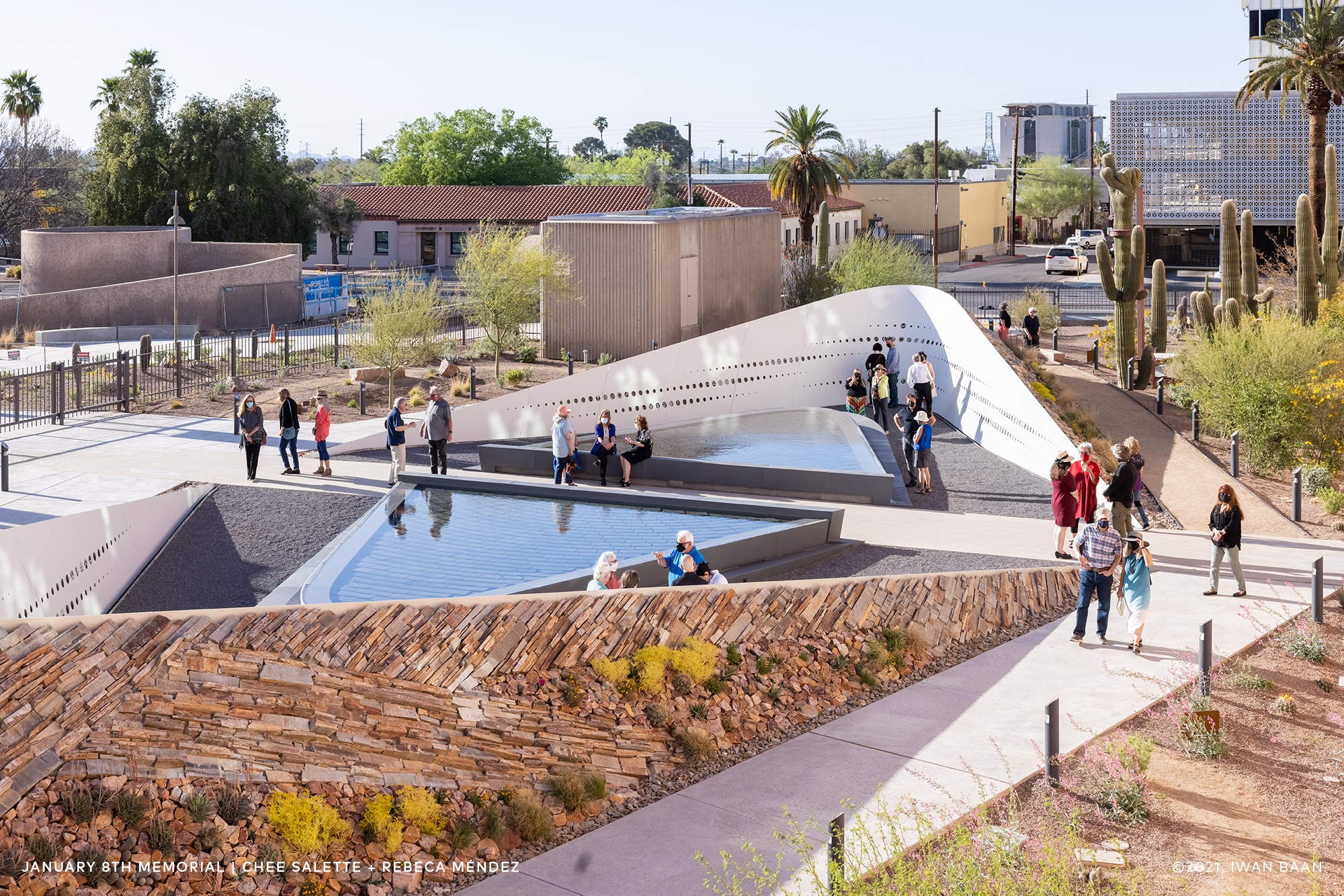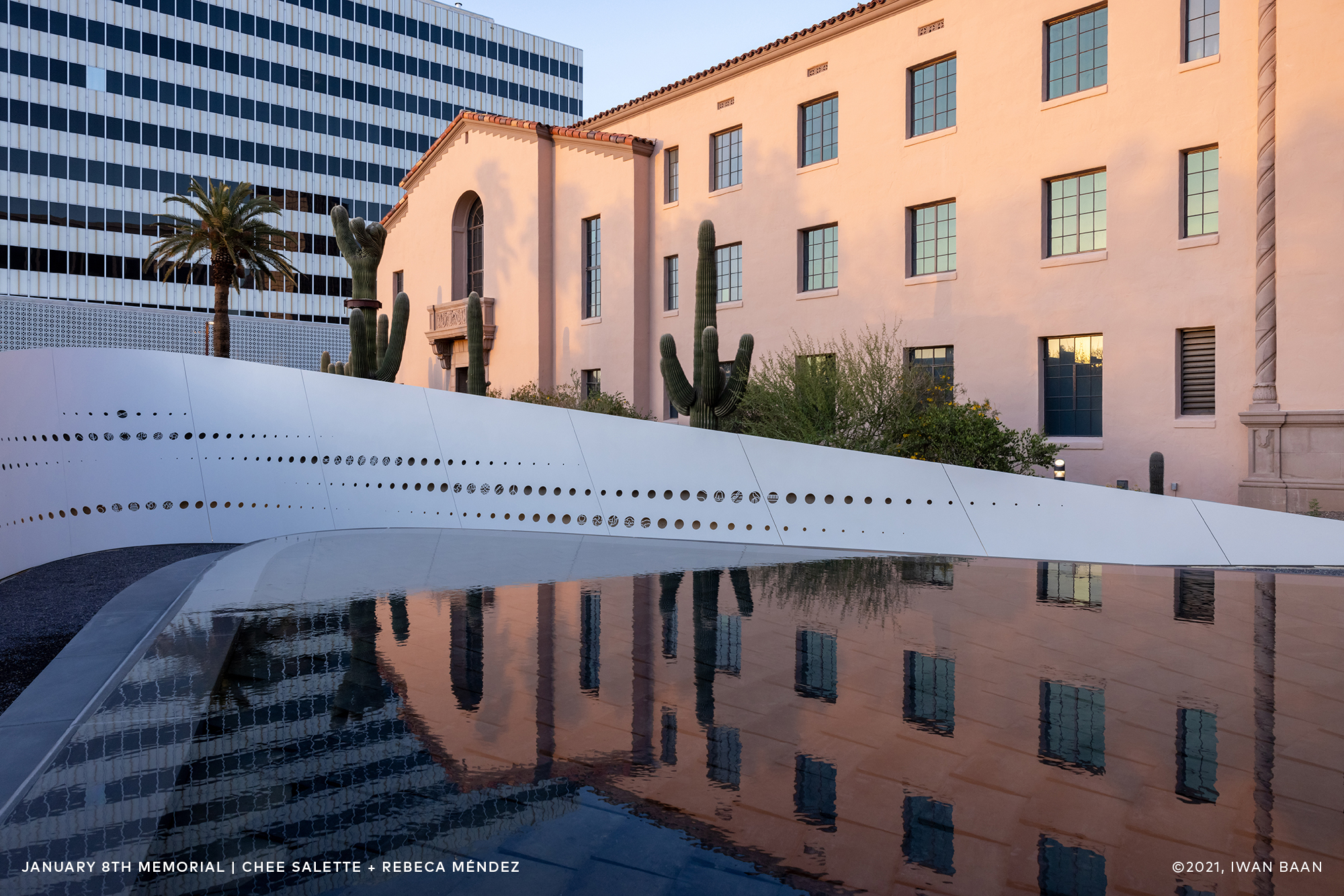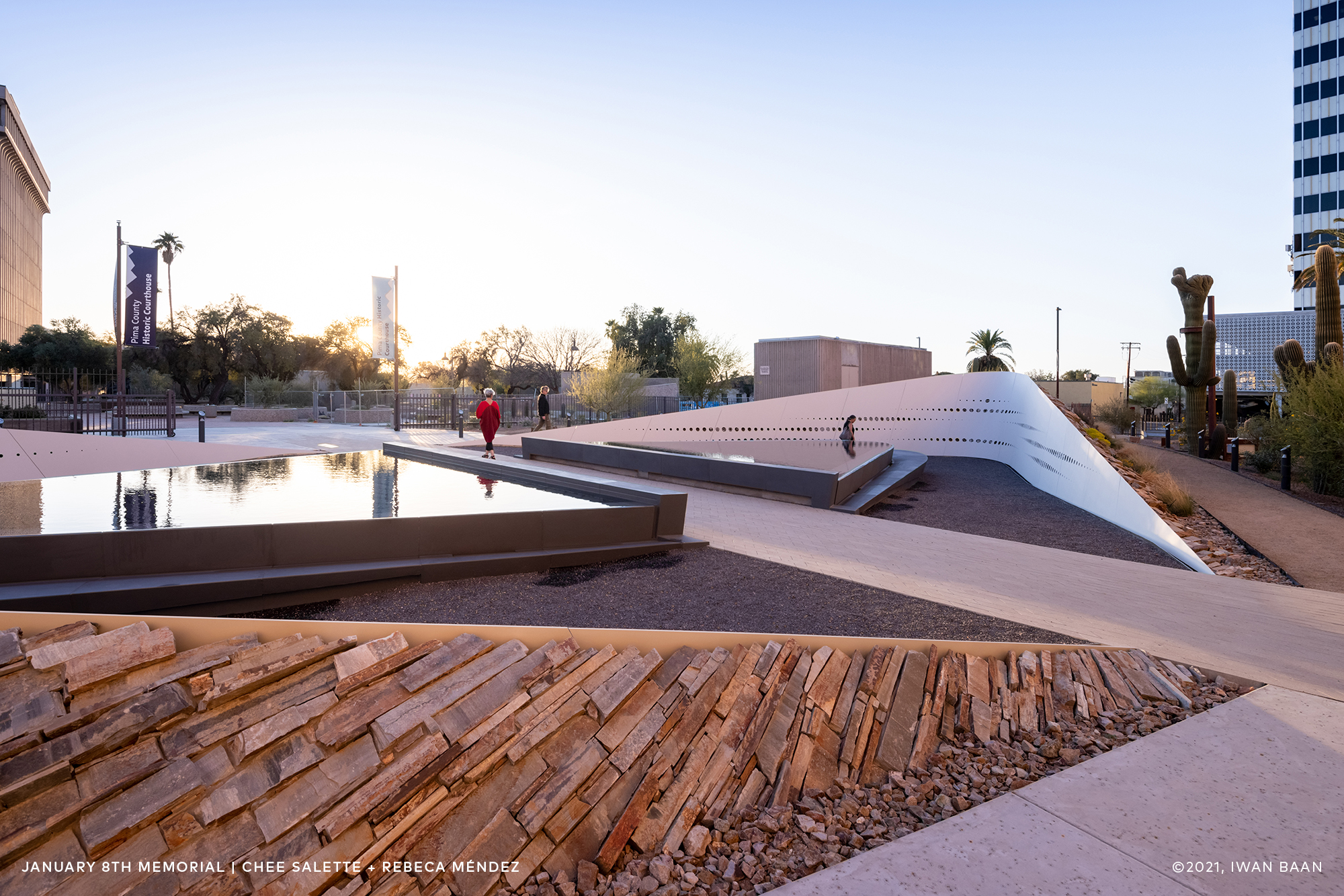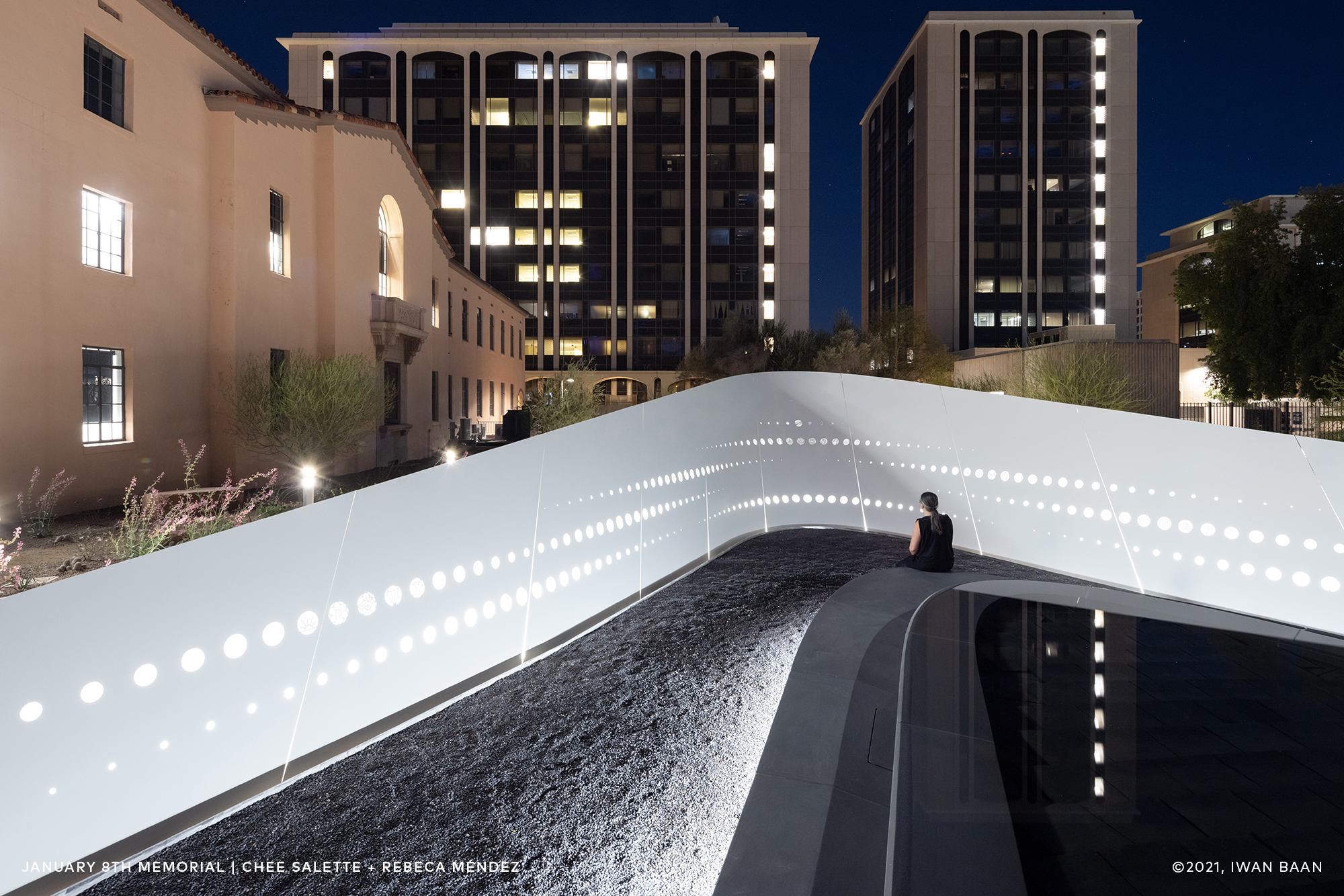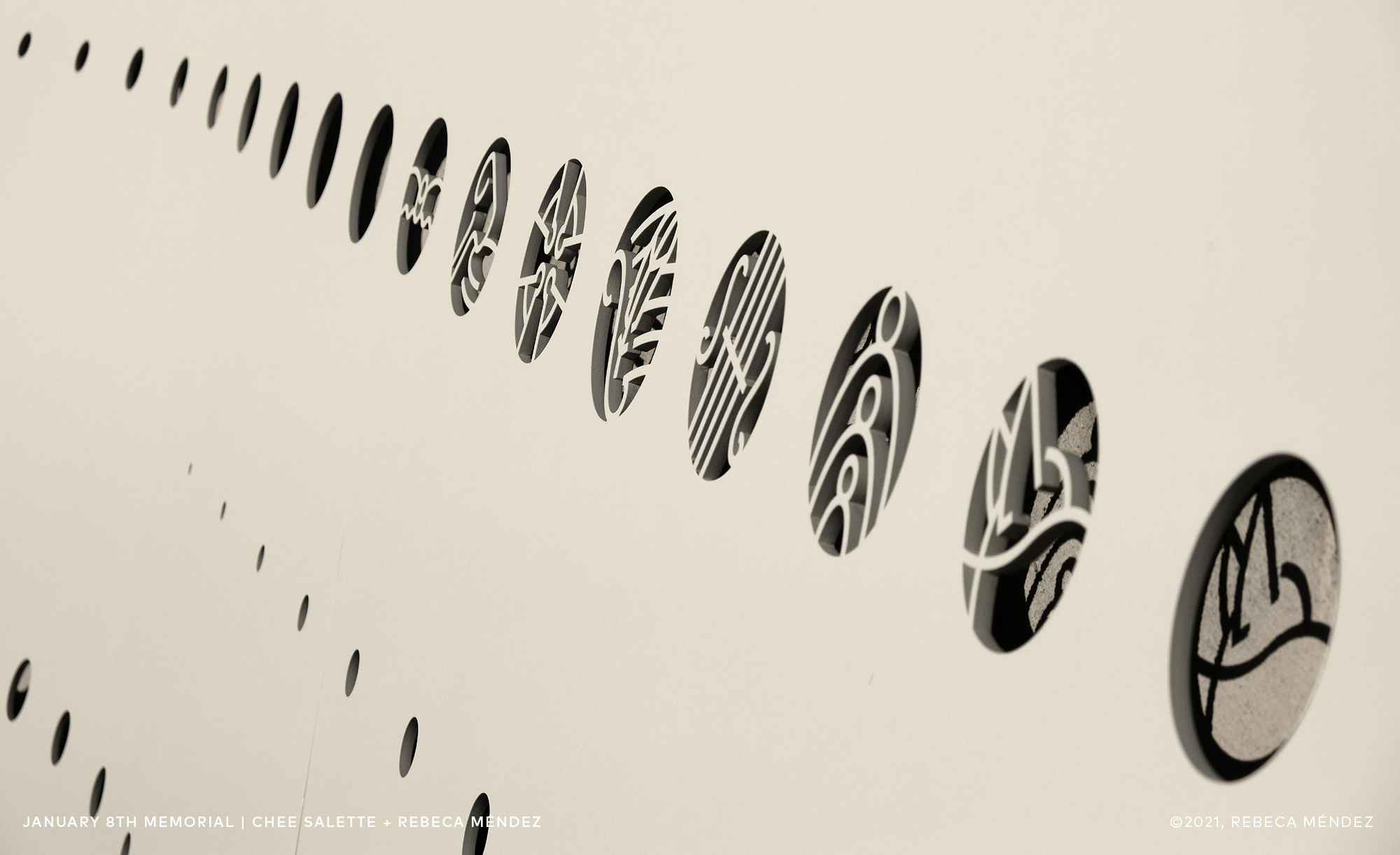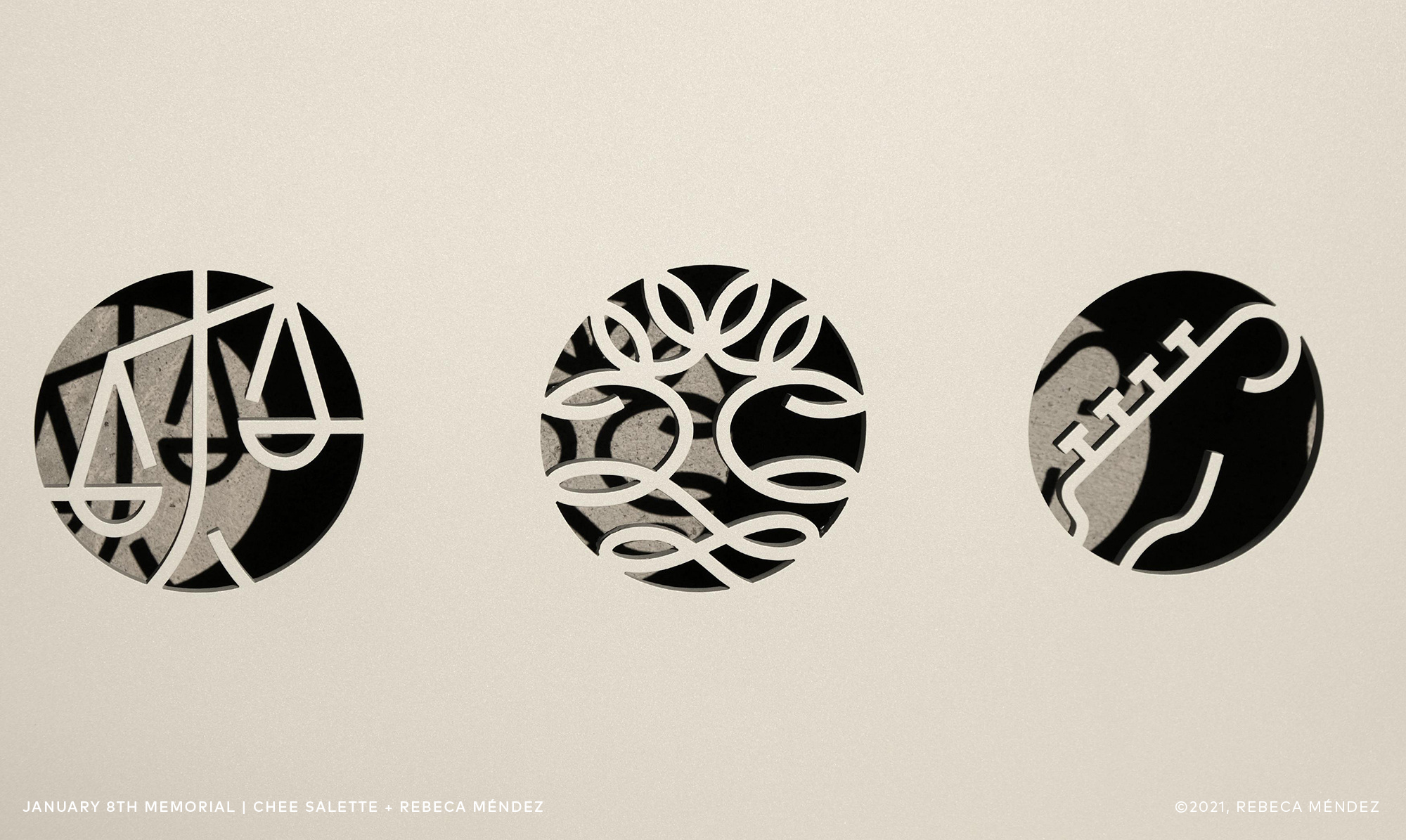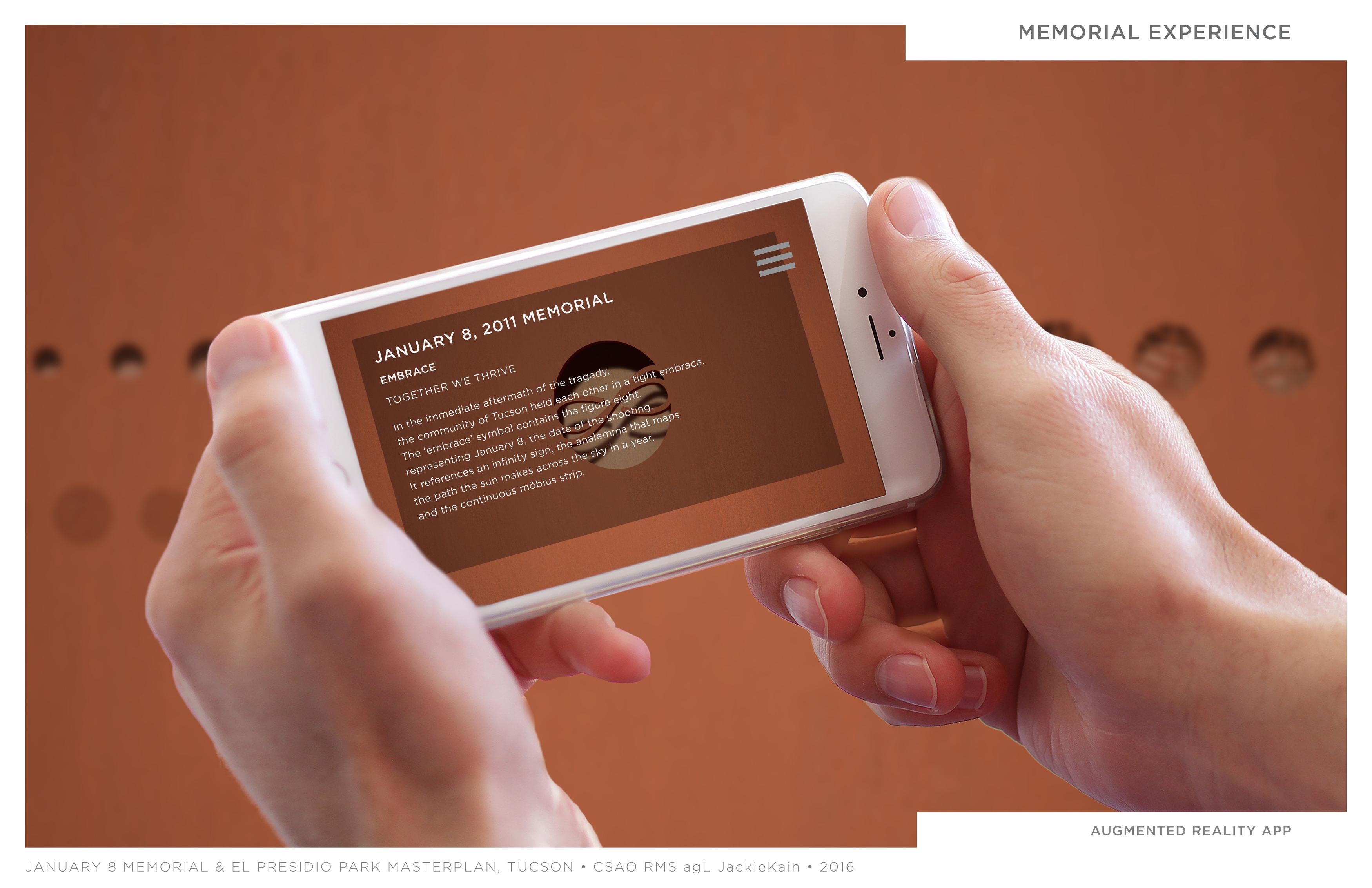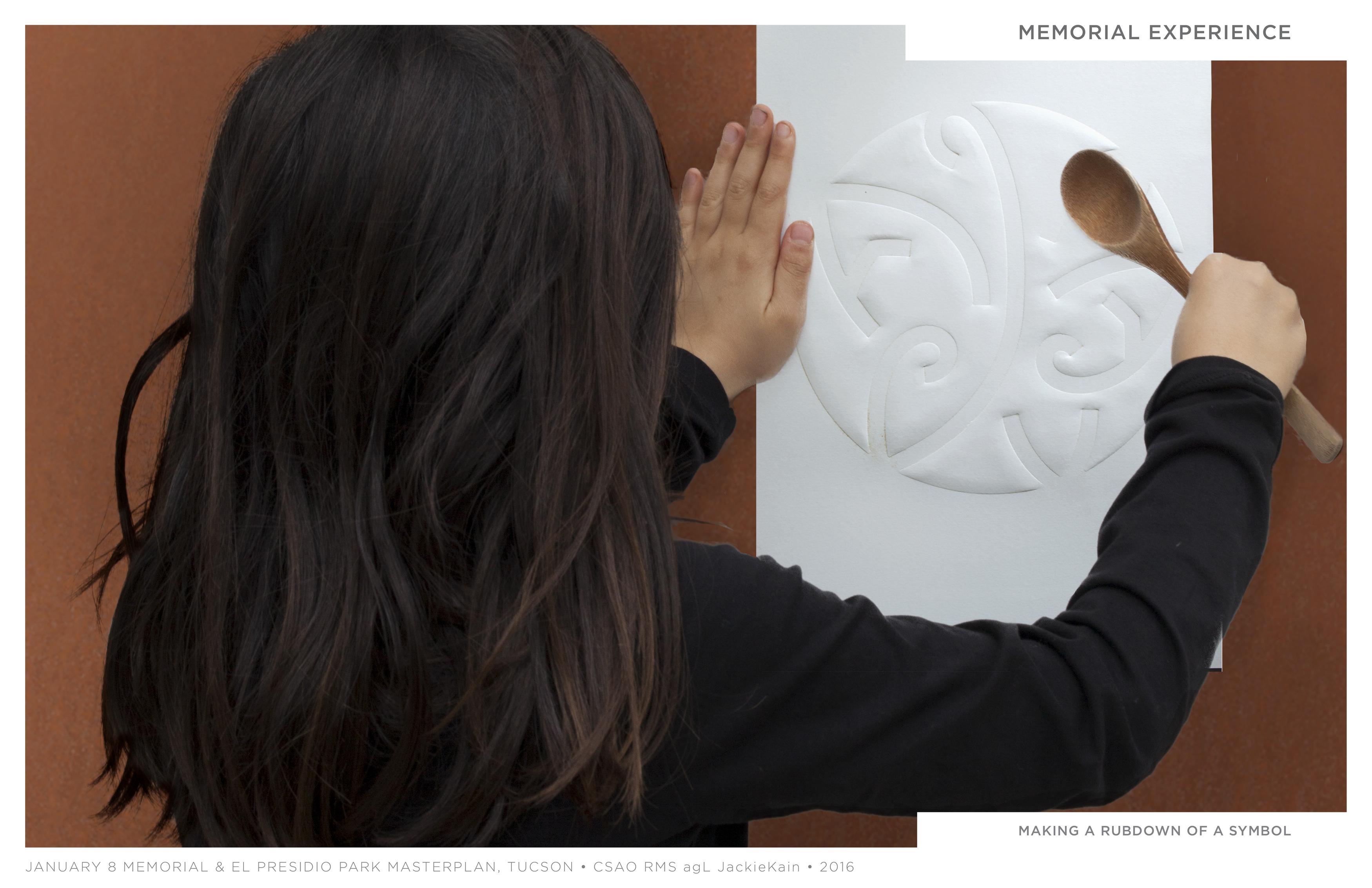JANUARY 8TH MEMORIAL: THE EMBRACE

An Embrace in Remembrance of Tragedy and Celebration of
Democracy Tucson’s January 8th Memorial is a collaboration between Chee
Salette, landscape architect and architect, and Rebeca Méndez, visual artist.
Chee Salette’s landscape and architecture together with Méndez’s symbolic
artwork honor the victims and survivors of the mass shooting and the resilience
of the community.
Photography by Iwan Baan.
Honoring the victims and survivors of the 2011 shooting at then Representative Gabrielle Giffords’ “Congress on your Corner.” The Memorial is an embrace. In a single gesture, its landforms become healing arms protecting the inner memorial, where the story of January 8th is told. Carved into the landscape of El Presidio Park, the Memorial is a place of contemplation and reflection where visitors can honor the victims and survivors of this tragic event, who were there to engage in democracy, and the first responders who stopped the violence and saved lives. Symbols telling this story are cut into this collective wall of memories, forming constellations that speak of the people who died, survived and responded on that day, and recall Tucson’s history of resilience. In the surrounding gardens, the earthforms of the Living Wall protect the Memorial. It evolves over time and changes with the seasons, yet it is timeless and spans generations, an organic landscape of stone and plants woven in a pattern that evokes ancient basket weaving. People plant seeds in its crevices, where life takes root, a celebration of Tucson’s togetherness in the face of tragedy, and a manifestation of the healing of its community.
Visit Southern Arizona Heritage & Visitor Center for further information:
https://visitsouthernarizona.com/january-8-memorial/
Photography by Iwan Baan.
Honoring the victims and survivors of the 2011 shooting at then Representative Gabrielle Giffords’ “Congress on your Corner.” The Memorial is an embrace. In a single gesture, its landforms become healing arms protecting the inner memorial, where the story of January 8th is told. Carved into the landscape of El Presidio Park, the Memorial is a place of contemplation and reflection where visitors can honor the victims and survivors of this tragic event, who were there to engage in democracy, and the first responders who stopped the violence and saved lives. Symbols telling this story are cut into this collective wall of memories, forming constellations that speak of the people who died, survived and responded on that day, and recall Tucson’s history of resilience. In the surrounding gardens, the earthforms of the Living Wall protect the Memorial. It evolves over time and changes with the seasons, yet it is timeless and spans generations, an organic landscape of stone and plants woven in a pattern that evokes ancient basket weaving. People plant seeds in its crevices, where life takes root, a celebration of Tucson’s togetherness in the face of tragedy, and a manifestation of the healing of its community.
Visit Southern Arizona Heritage & Visitor Center for further information:
https://visitsouthernarizona.com/january-8-memorial/
